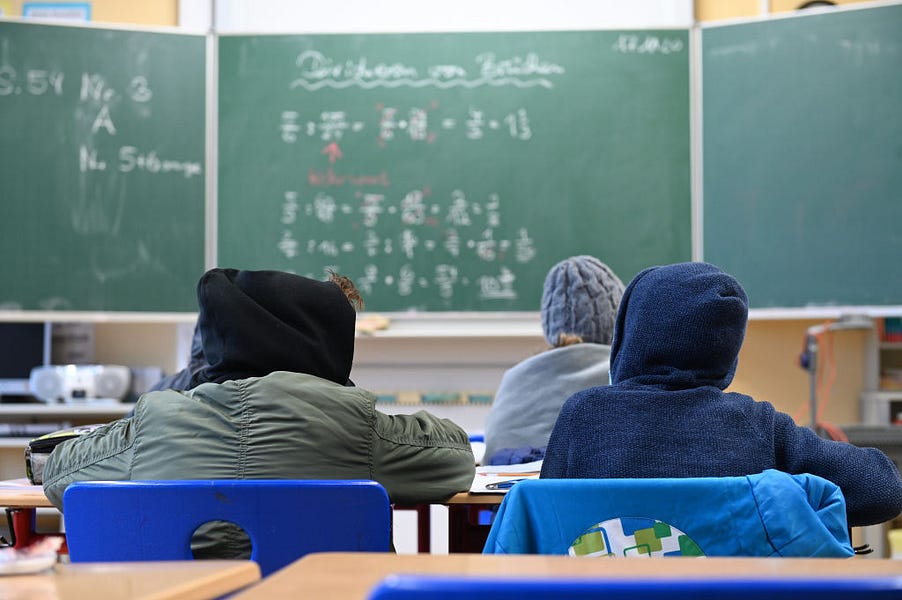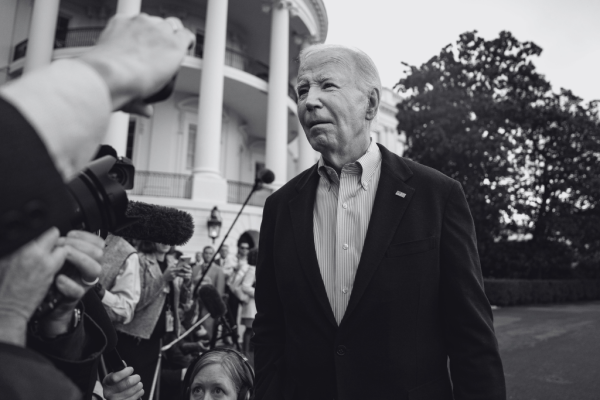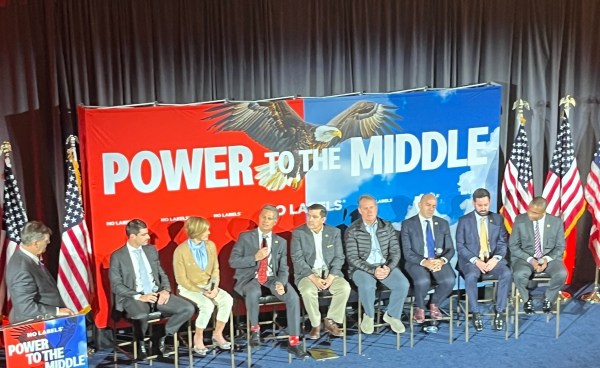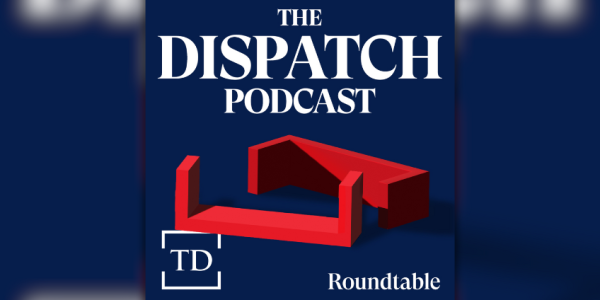Joe Biden’s election prompted spasms of joy in education circles. Before he was sworn in, a story in Inside Higher Education gushed over his “transformative” victory, cheered that he “believes in research,” and judged that community colleges are “likely ecstatic.” The Washington Post’s Valerie Strauss promised that Biden would fix “the inequity that has long existed in the education system.” Ken Wong, Brookings scholar and Brown University’s Annenberg chair in education policy, proclaimed that Biden’s education agenda represented “a return to responsible governance.”
Now, 100 days into Biden’s term, his education agenda is taking shape—and it’s anything but a model of responsible governance. His administration has exacerbated educational culture wars despite his promises to be a uniter. He’s done little to persuade recalcitrant teacher unions to lead on school reopening (other than perhaps threaten to smother them with bales of cash). And he’s pushed for stupefying levels of new school spending with no obvious interest in whether the funds are spent wisely or well.
When it comes to education, President Biden’s first 100 days have been nothing to write home about. Let’s take a closer look at the four subjects that have absorbed the lion’s share of the administration’s energy and that constitute his 100-day report card.
School reopening: A majority of school districts remain at least partly closed over a year into the pandemic, despite the widespread availability of vaccines, the vast majority of educators having been fully vaccinated for well over a month, data making clear that schools are not a significant source of COVID spread, and the copious evidence demonstrating that children learn better and have better mental and emotional health when they’re in school.
Despite all of this, Biden’s push to reopen schools has been half-hearted and lacking in urgency. In principle, Biden has extolled the benefits of in-person schooling and urged schools to bring students back. Indeed, back in December, before taking office, Biden pledged that “my team will work to see that the majority of our schools can be open by the end of my first 100 days.”
In practice, Biden balked at setting clear expectations for reopening or using his relationship with teacher unions to accelerate things. On his first day in office, Biden walked back his reopening goal by announcing that it no longer included high schools. That same day, first lady Jill Biden hosted the presidents of the two major teachers unions, praising their “heroic commitment to students.”
In February, CDC Director Rochelle Walensky announced at an official White House press briefing, “Vaccination of teachers is not a prerequisite for safely reopening schools.” Hours later, press secretary Jen Psaki walked that back, claiming that Walensky was speaking only “in her personal capacity.” A few days later, Psaki sparked ridicule when she stipulated that, in scoring Biden’s 100-day reopening goal, schools should be considered “open” if they offered a single day of in-person instruction each week.
Biden eventually clarified that he expected schools open five days a week—but rejected proposals to reserve federal aid for schools that actually did so. Ultimately, of course, the Democrats’ party-line American Recovery Plan included more than $120 billion for schools, with no expectation that schools actually be open (even part-time) to collect these funds. It’s nice that Biden has said that he’d like schools to open, but his stutter steps and deference to the unions have made him an embodiment of all talk, no action. Grade: D+
The proposed student debt jubilee: Before Biden even took office, progressive activists were pressing him to use executive action to forgive $50,000 per borrower in student debt. Sen. Elizabeth Warren, despite all evidence, termed student debt the “time bomb” that “could throw millions of families over a financial cliff.” To his credit, Biden has usefully pushed back (a bit).
In December, Biden observed that the president probably lacks the legal authority to forgive student debt. At a CNN town hall in February, Biden reiterated his opposition to forgiving $50,000, arguing the government shouldn’t forgive loans for those who attended “Harvard and Yale and Penn.”
Biden has, however, heartily endorsed less ambitious debt forgiveness. In January, he called on Congress to forgive $10,000 for all borrowers (even those who went to Harvard and Yale and Penn). In recent weeks, he’s hinted that he’s willing to forgive even more, even though blanket debt forgiveness—of whatever amount—would disproportionately benefit the affluent, give colleges an excuse to hike prices, and tempt students to borrow even more.
The troubling thing is that this is one place where there’s substantial bipartisan agreement on how to protect those who haven’t completed college or are wrestling with economic hardship, without embracing the kind of regressive, ridiculous giveaways that Warren craves. But Biden has shown no appetite for offering an alternative vision. Grade: C-
The culture war: For all his high-flown campaign talk about “bringing America together” and “uniting our people,” Biden’s education moves have shown a president seemingly content to stoke the culture wars. On his first day in his office, he issued an executive order suggesting that schools must allow biological males to compete on female sports teams. He abolished the Trump-established “1776 Commission,” which—in response to the New York Times’ 1619 Project and its kin—was charged with “enabl[ing] a rising generation to understand the history and principles of the founding of the United States.” He issued a Title IX executive order intended to undermine due process in college sexual assault investigations, while promising to restore Obama-era regulations under which the accused sometimes weren’t even informed of the charges against them (and which prompted hundreds of lawsuits from accused students).
Ol’ “Centrist Joe” Biden could’ve approached these issues differently. He might have suggested that a presidential order should be preceded by a presidential panel that would help weigh the rights of biological girls, transgender individuals who identify as female, and issues of fairness and safety. (Recall that this is how George W. Bush effectively handled the contentious stem cell question.) Biden might’ve nodded to the value of a reconfigured 1776 Commission and moved to retool it, or else quietly retired the effort in a less ostentatious manner. He might’ve acknowledged that the current Title IX framework was adopted via a formal rulemaking process and that, whatever his concerns about it, he’s sensitive to the importance of due process and believes there’s value in moving deliberately.
Instead, throughout the past 100 days, Biden’s administration has seemed eager to spark hot-button culture clashes in education. Now, the administration is revising the rules regarding the broadly popular American History and Civics Education program so as to prioritize grantees who embrace the woke agenda—name-checking materials like the New York Times’s historically challenged 1619 Project and the precepts of “anti-racist” darling Ibram X. Kendi.
Candidate Biden promised to lower the temperature of our culture wars and bridge some of our bitter divides. In education, early signs are that his administration has something very different in store. Grade: D-
Spending: Before Biden took office, Congress had already earmarked nearly $70 billion in emergency COVID aid to K-12 schools. As of February 2021, most of that money still hadn’t been spent. (As the Wall Street Journal editorial board drily noted, “It’s hard to spend money when schools aren’t open for classroom instruction since unions have resisted returning to work in much of the country.”)
But Biden doubled down in his American Rescue Plan, providing $130 billion more in additional K-12 aid. For reference, that’s double what the federal government typically spends a year on K-12 schooling. Meanwhile, states are already so swamped with relief money that it may be years before Biden’s bailout is fully spent. The Congressional Budget Office, for instance, estimates that nearly half of Biden’s “emergency” COVID K-12 aid will be spent between 2024 and 2028. On top of that, Biden’s proposed budget calls for a massive 41 percent increase in federal K-12 aid.
There’s a case to be made that schools needed some additional dollars (though it’s easier to make the case that families should receive these education funds—especially in all those locales where schools are open only part time). But it’s tough to justify this decision to helicopter tens of billions into even the most inert of public school systems. Grade: D
All in all, surveying Biden’s first 100 days, he’s earned a gentleman’s D. The best one can probably say is, remembering when it looked during parts of 2019 and 2020 like Warren and then Bernie Sanders might claim the Democratic nomination: “Things could always be worse.”
Frederick M. Hess is the director of education policy studies at the American Enterprise Institute.





Please note that we at The Dispatch hold ourselves, our work, and our commenters to a higher standard than other places on the internet. We welcome comments that foster genuine debate or discussion—including comments critical of us or our work—but responses that include ad hominem attacks on fellow Dispatch members or are intended to stoke fear and anger may be moderated.
You are currently using a limited time guest pass and do not have access to commenting. Consider subscribing to join the conversation.
With your membership, you only have the ability to comment on The Morning Dispatch articles. Consider upgrading to join the conversation everywhere.